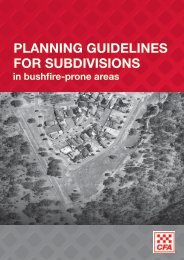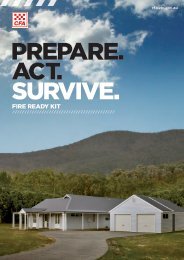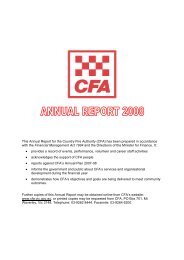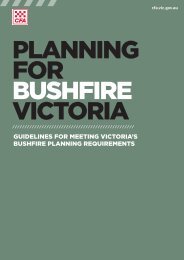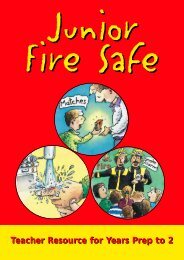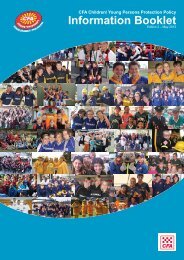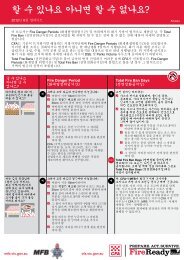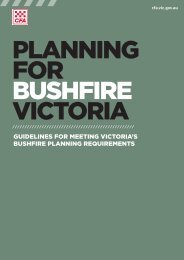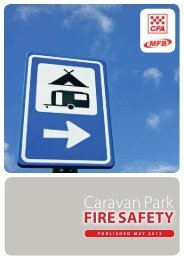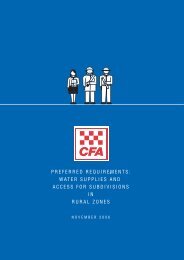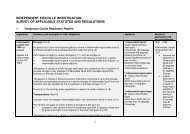Download part 2 - Country Fire Authority
Download part 2 - Country Fire Authority
Download part 2 - Country Fire Authority
Create successful ePaper yourself
Turn your PDF publications into a flip-book with our unique Google optimized e-Paper software.
Remember: Only stay with your home if you have properly prepared it for the event of<br />
a bushfire. If your home has not been prepared prior to a bushfire then<br />
make the decision to leave the home early before the fire approaches<br />
and makes it difficult and potentially dangerous to leave.<br />
Refer to the fact sheet "Surviving a Bushfire" for additional information.<br />
Following the group discussion and report back session, encourage each group to<br />
design a poster demonstrating personal safety procedures to carry out in a bushfire<br />
at home, in the car and wherever you are.<br />
Language<br />
Write a letter informing someone of the potential fire hazards around the home and<br />
recommend changes they could make to protect their home in a bushfire.<br />
Potential risk factors could include: leaves in gutters; wood pile leaning against the<br />
house; shrubs planted close to the house; tall eucalypt trees planted close by; tan<br />
bark, dry leaves and twigs lying on the ground near the house and only one road<br />
access into the property.<br />
Think about how these risk factors increase the fire risk.<br />
In groups, students write and then act out a play based on being "Trapped in a<br />
bushfire". Tape-record sound effects for the play. For example: crushed cellophane<br />
for a bushfire, tap running for water in a fire hose, hand splashing in a bucket of<br />
water for nearby river noises and blowing in an empty bottle for stormy weather.<br />
Art/Craft<br />
Invite an architect to visit the class and talk about buildings and homes designed for<br />
fire safety.<br />
Students design a fire safe house. Provide a description outlining features of the fire<br />
safe house and make a model of the house.<br />
When designing a fire safe house, students should use their knowledge of surviving a<br />
bushfire to help them.<br />
Compile a class list of safe house design features. For example: single storey,<br />
concrete floor or built close to the ground, solid brick walls, solid timber doors, lowpitched<br />
roof, window shutters, flywire screens on windows, chimney cover, metal<br />
sheeting on the roof and a layer of aluminium foil placed above and below the wooden<br />
rafters in the roof.<br />
Students could also consider designing safety areas around the house. Safety designs<br />
could include: a sprinkler system installed around the house, two roads into the<br />
property and a swimming pool/water tank/dam built close to the house.



